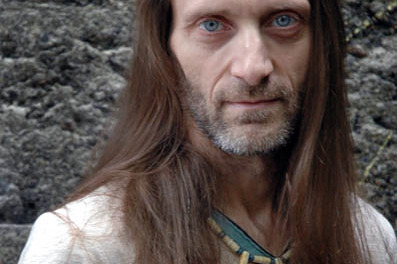Benoit Lachambre’s Prismes: playing with our perceptions of the world
What you think you see and what you really see are often completely different. Is this a beautiful woman or an ugly hag?
And is this image really moving?
Benoit Lachambre’s Prismes, which opened Tuesday night as part of the Danse Danse season at La Cinqième Salle at Place des Arts, makes us rethink the language of sight; the optics of seduction, masculinity, and femininity; clothing and nudity; the interiors and exteriors of bodies; strength and softness; light and shadow, and colour . . . lots and lots of colour.
The piece begins before the lights go down, when the six dancers go up to random people in the audience and show them optical illusions on pieces of paper. Eventually the lights do dim, but the dancers still aren’t onstage — they’re in the audience, commenting on the colours of two panels onstage under varying intensities of light. One dancer, then another, poses in front of the panels wearing draping, brightly coloured fabric. The lights go up and down, the illusory nature of colour perception is made apparent, and the show gets underway.
Light plays an integral role throughout the production. Lighting designer Lucie Bazzo worked closely with Lachambre to explore the ways that light plays on the body, the way it casts shadows, the way it alters the audience’s perception. Most interesting perhaps is the way that light is used to illuminate what lies beneath the skin: bones, muscle, sinew, breath. Ultimately, Lachambre’s is a choreography of inner energy, of the way the body is made alive, the way that muscles and bones and breath operate together to move us in innumerable ways, to express an unlimited range of emotion and experience. The lines that separate childish wonder from psychotic babbling, sensuality from the most grotesque burlesque, playfulness from self-destruction, stimulation from exhaustion, seduction from manipulation… these lines, being almost entirely subject to perception, are crossed and re-crossed repeatedly in Lachambre’s flights of fantasy.
A metal frame stands in the middle of the stage: dancers use it in a variety of creative ways, from creating kaleidoscopic geometric shapes with their slowly moving bodies, to swinging like a trouble-making monkey. In an image worthy of Austin Powers (think of the tent scene in The Spy Who Shagged Me), a pole is repeatedly inserted into a part of the frame being straddled by one of the male dancers. Perhaps all that needs to be said here is that that whole scenario cast an interesting shadow on the back wall.
The soundtrack, by Laurent Maslé and Tomas Furey, is primarily electronic, complementing and supporting some of the choreographed madness. However at times it slips into kitsch—for example when the cheesy strains of the ‘70s classic “Afternoon Delight” accompany equally saccharine fluttery duets in pink and purple and green. Later, a particularly intense manic episode is accompanied by the first movement of Beethoven’s Fifth Symphony, recalling Kubrick’s Beethoven-induced psychosis in A Clockwork Orange. And disco-inflected techno backs a meditation on over-stimulation, featuring flashing red breasts, hard hats, and strobe lights.
Light, sound, movement, colour: the media through which we both understand the world and express ourselves in it are brought into sharp relief by Lachambre’s innovative work.
Prismes continues through December 6.








